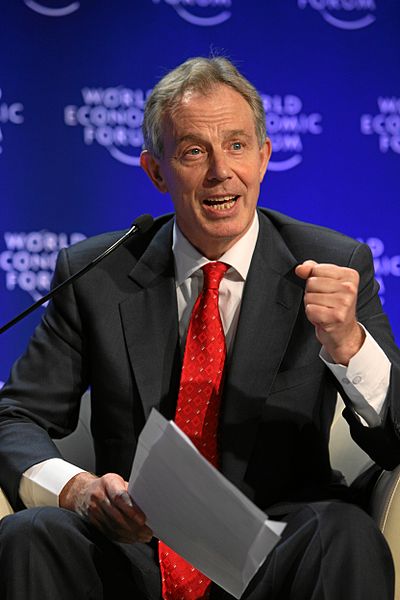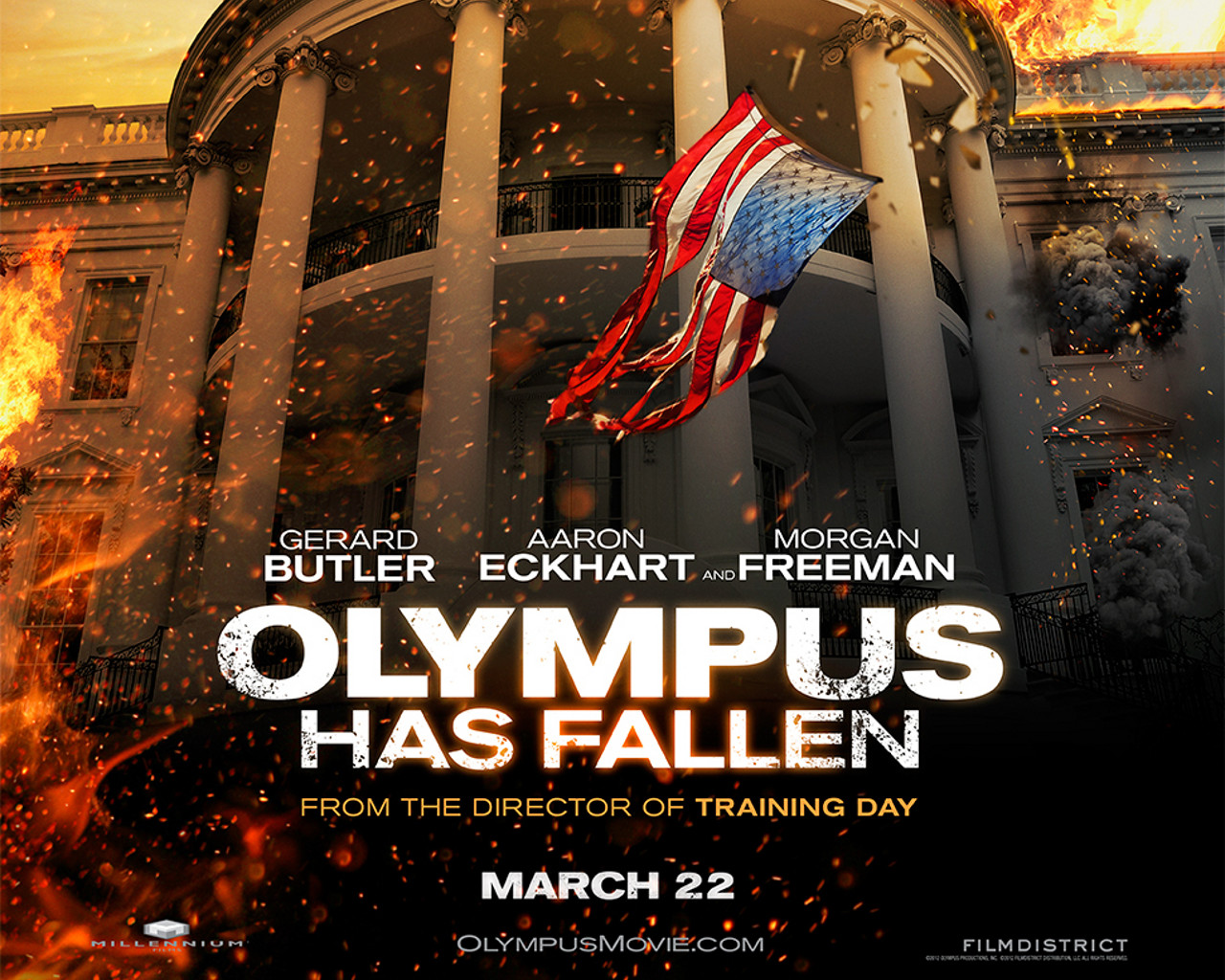
Jointly
hosted by the Institute of Advanced Study and the Department of Film
and
Television Studies at the University of Warwick, the Watching Politics
symposium brought together a range of disciplines to explore the
social,
cultural, aesthetic, historical, theoretical and, yes, political
impacts of
visual cultures on politics - and vice versa.
With such a
wide remit, it was interesting to identify how links between the
various papers
were established, frequently relating to this interdependence of
influence and
transmission between the two systems. Devoting attention across a
diverse range
of contemporary and past media, culture and politics opened up the
event to
consider a variety of interdisciplinary approaches and methodologies,
encouraging
a more holistic view of the relationship between visual cultures and
politics.
The
tone
for the day was set bythe plenary delivered by Stella Bruzzi
(University of
Warwick), titled “Tony Blair and Dramatisations of the War on
Terror.” This
paper centred on the manners by which defining political moments remain
as
lasting impressions through the propagation of various media forms. In the case of Tony Blair, this is evidenced
in hypothetical dramas associated with his involvement in the War on
Terror,
such as The Trial of Tony Blair (2007).
These texts emphasise Blair’s legacy and the way he will be
remembered by
future generations, and dovetail neatly with the publicity-courting,
stage-managed figure of Blair in the era of New Labour.

Figure
1: Tony Blair
(image courtesy of World Economic Forum 2009) portrayed by Robert
Lindsay in ‘The
Trial of Tony Blair’, Channel4, 2010
Bruzzi contrasted the gentle mocking of Blair
in the Michael Sheen/Peter Morgan texts (The
Deal [2003], The Queen [2006],
and The Special Relationship [2010]) with
more critical, acerbic portraits of the Prime Minister, notably The Ghost(2010), which focuses both on the
Blair as performer and mobilises familiar aesthetic modes of collage,
archive,
and documentary footage to comment on the real politician. As one
commenter
suggested, these depictions also parallel Richard
Nixon’sperformativity, and
raise the question of whether they are deceptive or self-deceptive
political
strategies.
These
thought-provoking ideas about visual iconography and the fluid
relationship
between the real and the fictional recurred in subsequent panels.
Maintaining a
focus on the War on Terror, Nikolaj Lübecker
(St
John’s College Oxford), Jo Oldham (Warwick), and Nike Jung
(Warwick) each
examined the pervasive nature of particular media discourses, noting a
range of
texts that support and disturb perceptions of the conflict with
reference to
war crimes, terrorism, conspiracy, and torture. Emphasised here was the
importance of context and the active role of the viewer in interpreting
political narratives and aesthetics.
Katy Parry (University of Leeds), Kay Richardson (University of
Liverpool), and Andrew Tolson (De Montfort University) each considered
different dimensions of mediation, representation, and communication in
the
visualising of politics, from viral videos to British political news
television
programming.
The
keynote speech was delivered by Ian Scott (University of Manchester),
titled
“Spectacle vs. Screenplay: Watching, Writing and Wrestling with
Political
Movies.” Although claiming to examine the tension between visual
spectacle and
the political scenarios, this paper largely focused on the
representation of
the former, citing recent blockbusters such as Olympus Has
Fallen (2013) and White
House Down (2013) as examples of mainstream texts that may be
criticised
for being inauthentic, histrionic, or implausible, and he questions
whether
these have diminished the potency of political cinema.
There is—and always has been—a fascinating
dichotomy between real political ideas and representational forms, a
contention
between the iconic and the ideological, but Scott pointed to the
lineage of
Hollywood action cinema to demonstrate how spectacle has traditionally
been
seen to supersede narrative by proponents such as Geoff King, but this
has been
challenged by some filmmakers in more recent cinema. Scott argued that
“politics and movies inform each other,” evidenced in the
joining of spectacle
to ideological contexts. Among the key aspects of the keynote for such
a
multidisciplinary conference was the distinction between
“worthy” political
texts and films that simply utilise political contexts, and it remains
debatable which form is more influential. Focusing on spectacle as a
political
form, Scott provocatively argued that film has reached an impasse in
that it is
trapped by spectacle in ways that television is not. In the
question-and-answer
session that followed, a central focus was onthe subtle divorce of
destructive
spectacle from associations with 9/11 despite continued symbolic,
democratic
agendas. Also of significance was the question of political intent, and
how
interpolative politicaleffects contrast with Slavoj
Žižek’s persuasive argument that these approaches make cinema
expressly unpolitical.

Figure
2: Olympus Has Fallen
©
Millennium Films
The
subsequent panels were divided between the
representation of political history in cinema and the role of new media
in
modern politics. In the former, Douglas Morrey (Warwick), Hannah Graves
(Warwick), and James Harvey-Devitt (Anglia Ruskin University)
considered
significant political events and figures to explore the political
functions and
failures of cinema. These papers resonated with the earlier plenary and
keynote
addresses, providing a diverse yet complementary focus on the
importance of
cinema in political affect. The corresponding panel addressed the roles
of
various online media, including Reddit (Annika Richterich, University
of
Siegen), blogs (Rachel Mizsei-Ward, University of East Anglia), and
YouTube
(Jennifer Quigley-Jones, Warwick), in politicising audiences and
furthering
political discourses, another common theme throughout the symposium.
In
the final panels, Simon Cross (Nottingham Trent
University), Heather Nunn & Anita Biressi (Roehampton University),
and
Richard Wallace (Warwick) drew together themes of continuity in party
election
broadcasts, reality TV series, and political satire in order to make
sense of
political systems and events. Chris
Clarke (Warwick) evaluated recent finance documentaries, such as Inside Job (2010) and Capitalism: A Love
Story (2010), through
the lens of International Political Economics, providing a distinctive
analysis
of the “embedded liberalism” of these texts. Dee Marco
(Warwick) addressed the
racialised representation of the masculine hero, focusing on the figure
of
Nelson Mandela in post-Apartheid South Africa. These dynamic and
insightful
papers provided a strong close to a well-organised and engaging day of
political and cultural debates.
A
diverse range of papers were presented at the Watching Politics
symposium,
united under the broad theme of interrogating the mutual impact of
politics and
media. Engagement with this theme took many forms, and the breadth of
papers
was indicative of the symposium’s interdisciplinarity. In his
closing remarks, organiser
Greg Frame emphasised the importance of questioning what it is that we
value
about politics and media and how we can improve them in an era of
declining
political authority. The ways in whichpopular culture embeds particular
political dimensions will continue to be central to our understanding
of media
politics, but also offer the potential to shape future research.
Ultimately,
the varied interests and approaches of contributors animated many
lively
discussions, and the symposium offered an intimate environment for
engaging
with an array of media and political scholars.